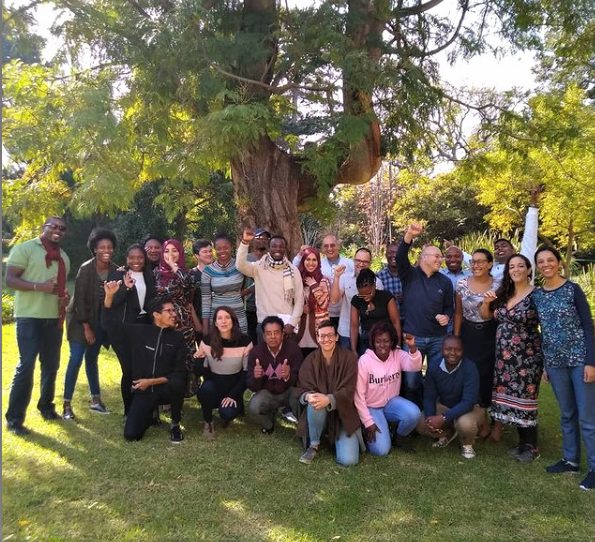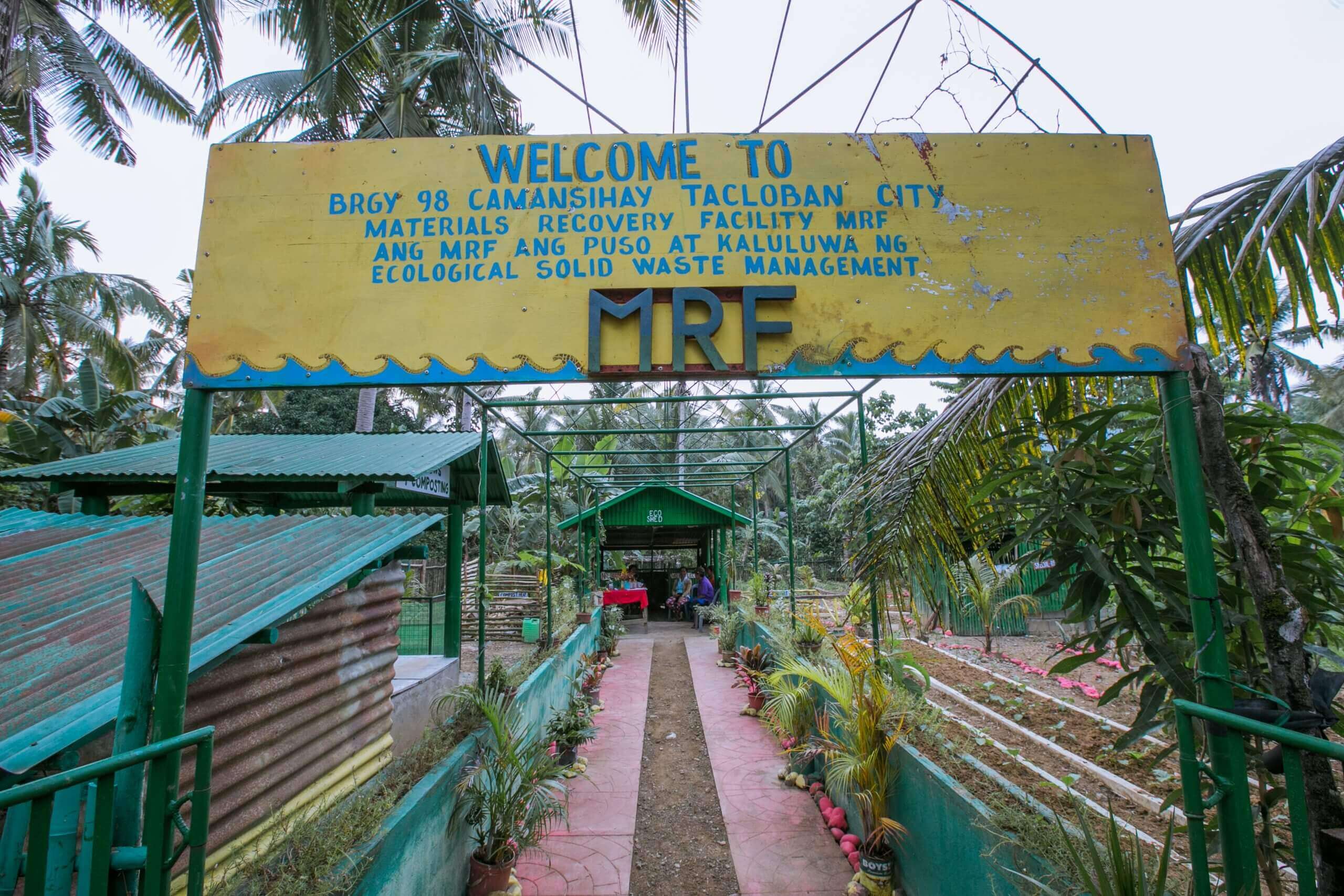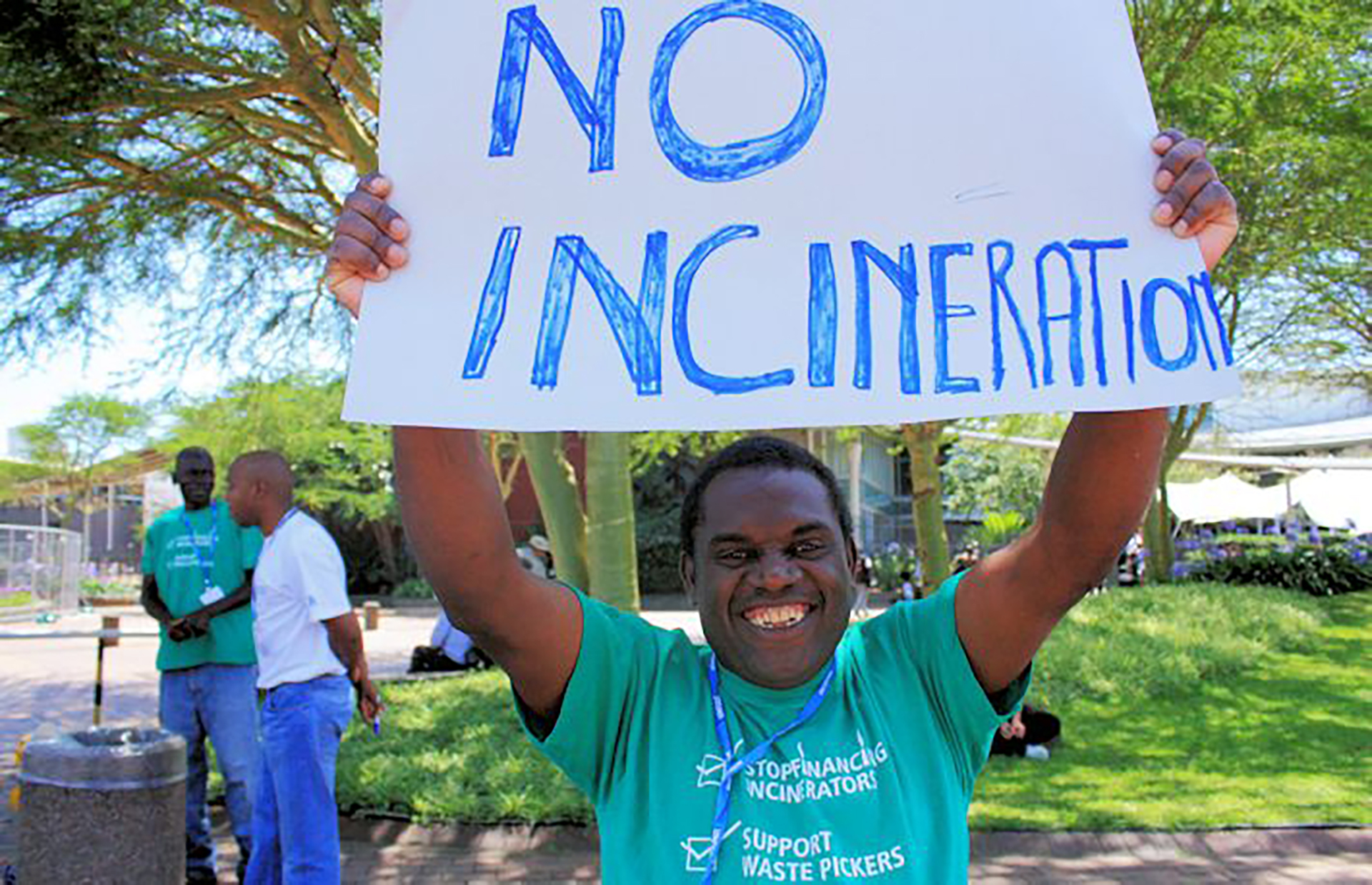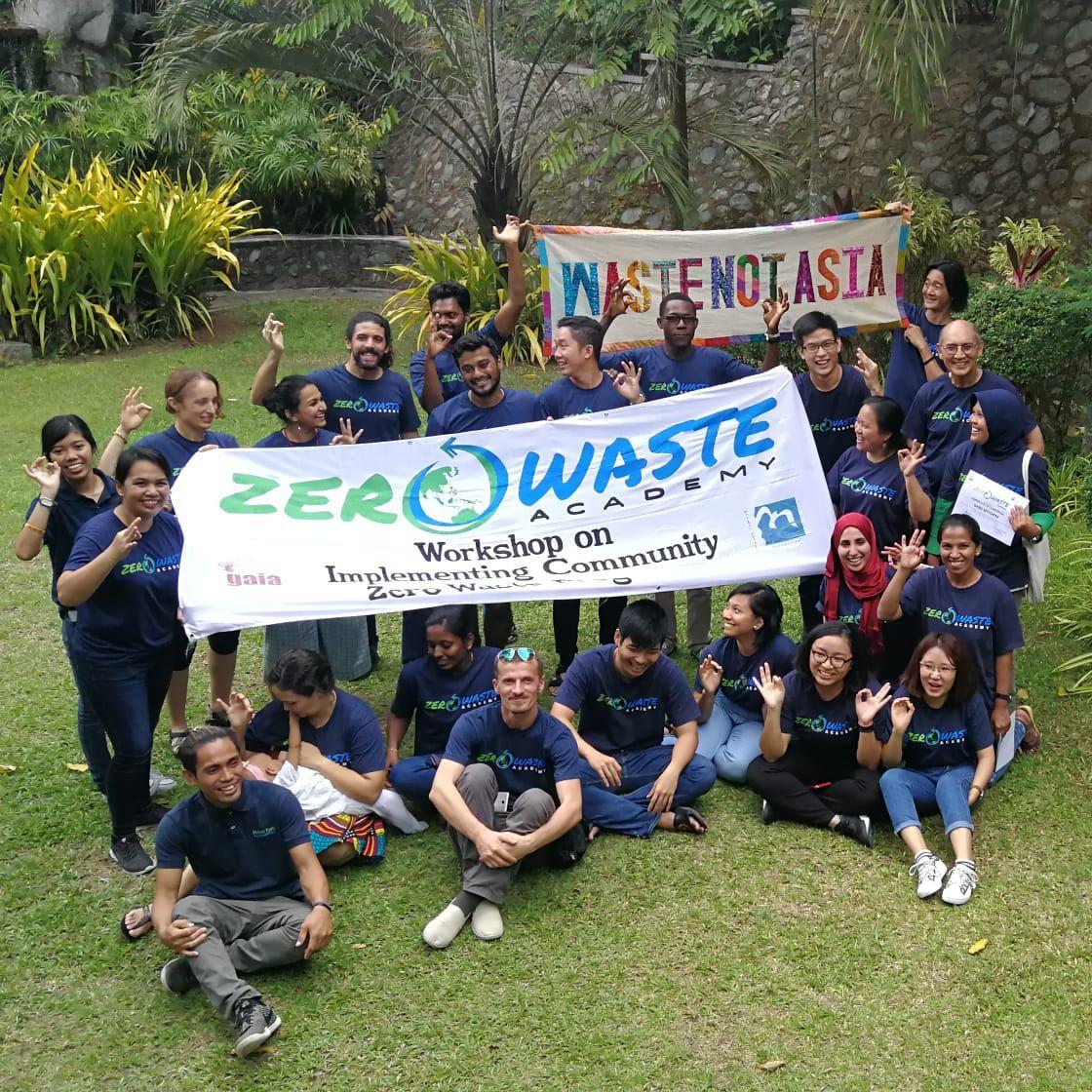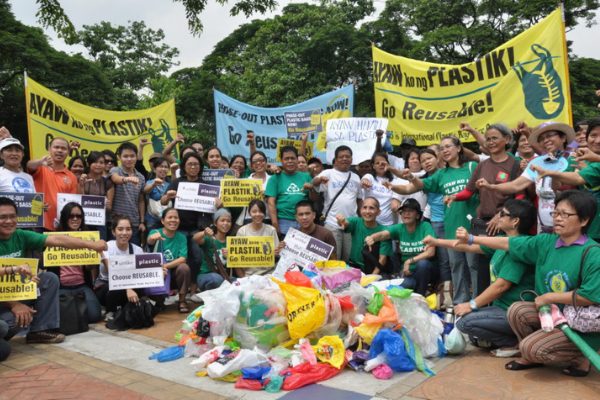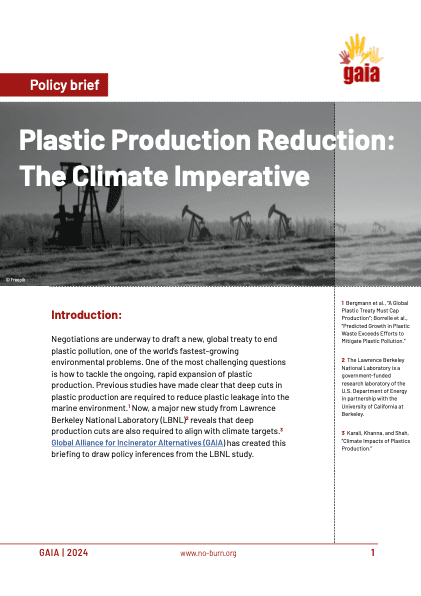Everyone knows what causes climate change: fossil fuels. What’s less known is that plastic is also a climate polluter, as it is made from fossil fuels, such as crude oil, coal, and natural gas. New research published by Center for International Environmental Law (CIEL) makes this inextricable link visible, by examining greenhouse gas (GHG) emissions from each stage of plastic’s lifecycle, from wellhead to refinery, incinerators, and in the oceans.
The research clearly shows that burning plastic in incinerators creates the most CO2 emissions among any plastic waste management method. Waste incineration, also referred to as Waste-to-Energy, is the primary source of GHG emissions from plastic waste management, even after considering the electricity that can be generated during the process. According to the analysis of potential GHG emissions from plastic incineration, conducted on plastic packaging waste, burning a metric ton of plastic in an incinerator results in almost one ton of CO2 emissions. If the power generation potential had not been accounted for, the net CO2 emissions would have amounted to 2.9 metric tons per ton of plastic burned.
Globally, burning plastic packaging adds 16 million metric tons of GHGs into the air, which is equivalent to more than 2.7 million homes’ electricity use for one year.
Globally, burning plastic packaging adds 16 million metric tons of GHGs into the air, which is equivalent to more than 2.7 million homes’ electricity use for one year. If the petrochemical industry massively expands by 2050, GHG emissions from plastic packaging incineration will increase to 309 million metric tons. These estimates only account for plastic packaging, which represents 40% of whole plastic waste stream, and only the 64% of plastic packaging waste that is managed after use. That is just a little more than a quarter of all plastic waste. Therefore, possibilities for far greater climate impact lie in the remaining portion.
The U.S. is the second largest plastic consumer and generates almost 38 million tons of plastic waste each year. The climate impact of plastic waste incineration in the U.S. was about 5.9 million metric tons in 2015, which is equivalent to 1.26 million passenger vehicles driven for one year, or more than half a billion gallons of gasoline consumed. Despite the urgency in tackling plastic pollution and climate change by reducing the amount of plastic used and burned, the incineration industry has worked to portray themselves as “renewable energy,” misleading decision makers and the general public into providing them with renewable energy subsidies that should be going to real renewables.
In Oregon, there’s a big fight going on between the biggest incinerator company in the U.S., Covanta, and the activists who are trying to keep taxpayers’ money from being wasted for decades to come. The company has been pouring thousands of dollars into the state legislature to try to get included in the state’s cap and trade policy so that they can be seen as “renewable.” This incinerator is the 20th largest source of CO2 emissions in the state and the highest greenhouse gas emitter in Marion County. Covanta also extends its influence to New York, for another legislative process on renewable energy credits, where they are complaining about how much money they’re going to lose if New York State moves forward with its plans to reduce carbon emissions. The legislation would put a price on carbon emissions, and would cost Covanta an estimated $322 million over 10 years, and potential shutdown. Similar fights have taken place throughout the country for decades, which resulted in 23 states officially classifying waste incineration as renewable energy. The industry has long been using these subsidies to prop up their business.
So-called “Plastic-to-fuel” technologies, such as gasification and pyrolysis, and emerging proposals for chemical recycling are yet another climate mitigation strategy that the industry has put forward. These techno-fixes raise more questions than answers, however, as few facilities have operated on a commercial scale and the industry is known for high-profile failures and wasted investments. With such scarcity in the data on environmental impacts of these technologies, the responsibility to prove climate benefits of the final product – which will be another form of fossil fuel – remains to be borne by the industry. In the meantime, global incineration giants work closely with major plastic producers to promote gasification and pyrolysis. Earlier this year, BASF, Braskem, DSM, ExxonMobil, Henkel, Procter & Gamble, Suez and Veolia formed the Alliance to End Plastic Waste (AEPW) and pledged to invest $1.5 billion over the next five years into research and development of plastic waste management technologies including pyrolysis and chemical recycling, which was immediately criticized for the fact that they are investing more than $180 billion in new plastic manufacturing facilities.
For every metric ton of plastic packaging waste recycled, more than one ton of CO2 emissions is avoided, as it reduces the need for virgin material production and associated energy use.
The research also showed the excellent climate benefits of plastic recycling. For every metric ton of plastic packaging waste recycled, more than one ton of CO2 emissions is avoided, as it reduces the need for virgin material production and associated energy use. Recycling is also three times more energy efficient than extraction of virgin materials, and is estimated to become as much as 48 times more energy efficient by 2050 as recycling capacity improves. However, recycling should not be held as a primary solution to ever-increasing plastic. Current recycling capacity, in any country, falls short of the amount of plastic waste that is flooding our lands, rivers, and oceans. There’s simply too much plastic in the world, and it has outpaced all existing waste management methods to date. There is no way that recycling can keep up, and besides, plastic can only be recycled a certain number of times before it becomes waste. While recycling has a firm place in our transition to less plastic production and consumption, it will eventually decrease as we phase out the use of unnecessary plastic products and packaging. Therefore, recycling should be used as a bridge on the road to zero waste, not as a crutch to prop up single-use plastic production.
At the end of the day, it all comes down to the urgent need to shift our economies from an extractive one toward a low-carbon, climate resilient alternative. The industry’s plans to massively expand both petrochemical production and waste incineration is a direct threat to our communities and environment. Half-measures and solutions like plastic recycling and regrettable substitutions will become tomorrow’s problem. The research clearly shows that waste prevention coupled with reduced plastic production is by far the best way to reduce GHG emissions. Putting an end to our unsustainable production and consumption patterns is the only path forward to turn the tide on ever-intensifying climate change.
